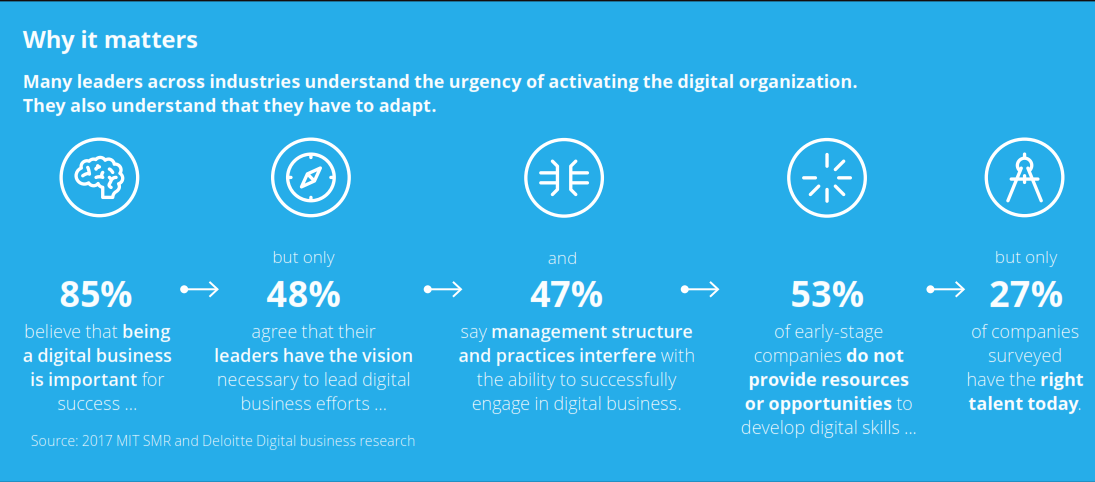Integrating human capital along with EHS transformation

The central aspect of many EHS (Environment, Health & Safety) narratives in recent times have been around its transformation and human capital.
The apparent reason being the mutual connection EHS and human resources share.
However, if we start exploring the portrayal of modern EHS systems with respect to human capital, rifts and divergent management issues starts appearing.
Here is a ‘case in point’ infographic from the 2017 MIT Sloan Management Review and Deloitte digital business research highlighting the issue we are suggesting:

As we move towards achieving EHS transformation the ‘right skillset’ demand from the human capital increases, exponentially. In our previous blogs, we had talked about deploying modern EHS systems with right (and appropriate) trainings for the workforce.
Here, we’ll talk about the bridge that connects human capital with EHS transformation – automation. We’ll look at how organizations can set the stage for a digital EHS future without facing the daunting challenges posed via unskilled and unprepared human resources.
Building your approach
The most basic component that make up conventional EHS systems today are paper forms and Excel sheets. In combination, they are the most used data collection methods within the EHS domain, globally.
However, conventional systems and their lacunae are well-known. A shift towards EHS transformation should exclusively include improving and enhancing human resource aptitude, skills and interaction with digital platforms. A general resistance to adapt to newer platforms should become the first point of conflict resolution, within organizations. Despite concerted efforts via “investments” in selecting digital partners, upskilling of human capital isn’t part of the EHS transformation planning for many organizations.
Associating the value proposition of automation via demonstrations and accessible guides prior to its launch and implementation can break the knowledge and awareness barriers. This is similar to management of change and the organization’s top brass should study and understand EHS transformation as one.
The core motivation behind modern EHS systems and their implementation should be well-known, well understood and should come with a contingency plan – management being the point, in this respect.
Propagating EHS transformation comes from creating the right environment and culture within the organization. Understanding the EHS ambition should remain the standout pointer in bringing about EHS transformation via human capital.
Awareness comes of age
Remember that back then, conventional systems gained popularity over time and with familiar usage patterns. Digital platforms have a unique advantage within this context. Their intuitive workflow and a moldable familiar interface allows the relationship to be more interactive. Universal accessibility dependent on the industry policy adds to this dimension fueling many numbers of hours of usage.
Such features make the human capital comfortable about their grasp and knowledge of the modern EHS systems. Resolving outstanding issues should become the focal point of EHS managers who should make it as their own initiative to help workers use and report more-and-more with the new systems. Reengineering work processes might become a necessity during the process of EHS transformation.
Cultivate the digital edge
The overarching EHS transformation through human capital over the period of operations will bank on:
- Digitally mature and aware companies value pragmatic solutions. Those that are open to experimentation and deliver with speed.
- Such companies are early stage innovators in technology aspects and outlook.
- These companies are talent magnets aspiring development into human capital.
The sooner the organizations start understanding the core value of Environment, Health and Safety to corporate decision making, the more robust the EHS transformation becomes.
Singular systems functioning in isolation with a limited scope have next to no value in EHS transformation. Interconnected, networked and real-time tools is what EHS managers and workers need for organizations to realize the value of human capital and its bonding with EHS transformation.


